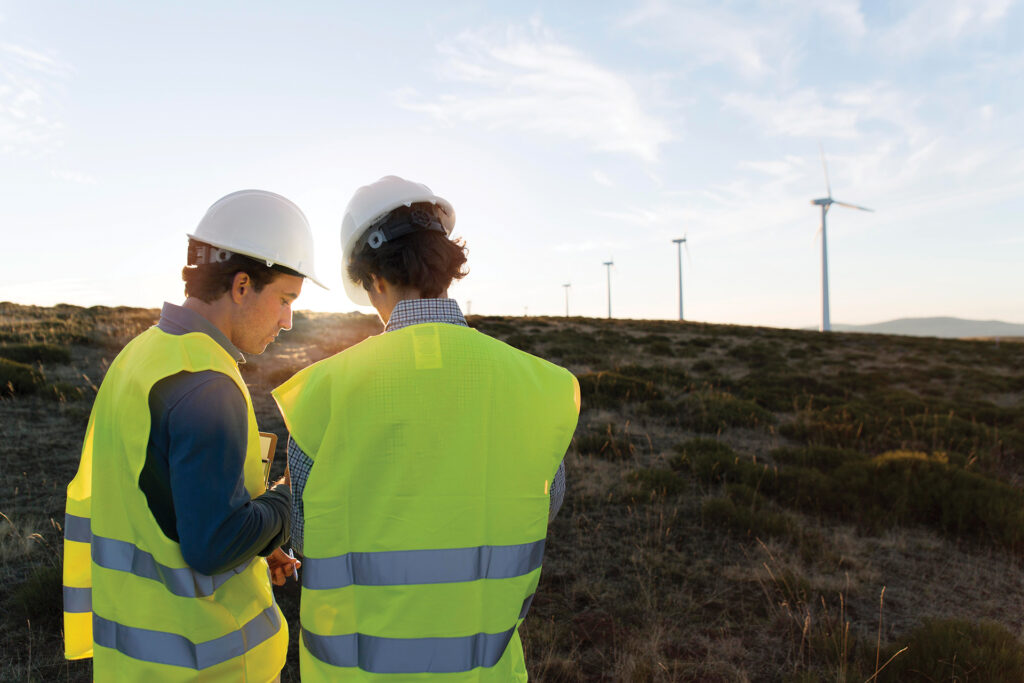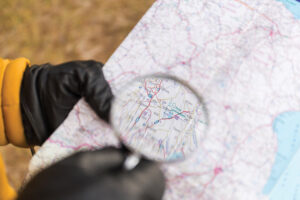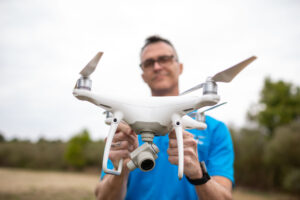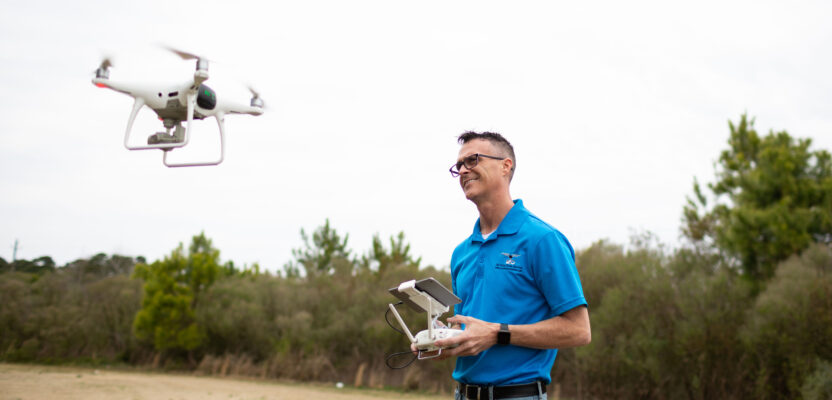Are we headed for a confrontation?
When the first photogrammetry drones appeared in the market around 2013, almost every surveyor who heard about them and did some research was tempted to add photogrammetry to their list of services. Eventually the reality of costs and the entire issue of becoming an aviation company and having to add expensive, specialized software deterred some. Others, however, took the plunge and became full-blown photogrammetry companies.
 Originally, the business of generating maps from photographs acquired from an aircraft was a minefield of permits, huge expenses, and barriers of entry that made it an exclusive club of a few companies worldwide. Nowadays everyone can buy a drone with an acceptable camera and a copy of Pix4D or another photogrammetry software and become a cartographer.
Originally, the business of generating maps from photographs acquired from an aircraft was a minefield of permits, huge expenses, and barriers of entry that made it an exclusive club of a few companies worldwide. Nowadays everyone can buy a drone with an acceptable camera and a copy of Pix4D or another photogrammetry software and become a cartographer.
But is every map a legal document? I personally had to endure five years of spherical mathematics to become a geodetic engineer and then had to register my signature in the engineering association to become a legal land surveyor, capable of officializing property boundaries. But is that necessary in the case of every single cartographic product?
This is a debate that is beginning to gain momentum as more and more surveying associations are questioning the validity, or even legality, of certain maps generated by non-surveyors. As a warning to readers, this article is aimed at posing more questions than offering opinions. What we need in this industry is an honest conversation about the legal issues raised by land surveying boards around the country.
The case we want to use as the perfect example of this conundrum is Michael Jones, a North Carolina photographer and drone operator who is fighting a legal battle against the North Carolina Board of Examiners for Engineers and Surveyors (NCBELS) in order to stay in business.
Jones, an FAA-licensed drone operator and photographer, started an aerial-mapping enterprise to offer landowners a bird’s-eye view of their property, useful in situations where a full land survey is unnecessary. However, in 2019, NCBELS issued a cease-and-desist letter to Jones, demanding he stop his mapping operations or face harsh penalties.
What followed was three years of legal ramblings that climaxed on May 21, 2024, when a three-judge panel of the 4th U.S. Circuit Court of Appeals ruled that North Carolina may ban the creation of aerial maps by everyone except licensed land surveyors. The ruling allegedly strips away Jones’ First Amendment rights, so he and his attorneys with the Institute for Justice (IJ) will ask the U.S. Supreme Court to hear his case, with the goal of restoring Jones’ right to communicate with clients without government interference.
 The conclusion of the Fourth Circuit is that Jones is not engaging in speech at all. There is a long history of strong First Amendment protection for images and visual information, nevertheless the court’s decision separated the creation of maps as “conduct,” not speech, “that classically falls under the surveying profession.” The court also argued that because Jones’ speech takes place on his clients’ property, the government somehow needs less justification to interfere than if his speech took place on public land.
The conclusion of the Fourth Circuit is that Jones is not engaging in speech at all. There is a long history of strong First Amendment protection for images and visual information, nevertheless the court’s decision separated the creation of maps as “conduct,” not speech, “that classically falls under the surveying profession.” The court also argued that because Jones’ speech takes place on his clients’ property, the government somehow needs less justification to interfere than if his speech took place on public land.
So, the question is what do we do with this conundrum? Who is right and who is wrong? Furthermore, is there a right or wrong answer?
Let us forget or bypass the legal aspects for a moment and concentrate on the professional aspects and the ramifications for our industry. The reason land surveying was regulated in the first place was simply because it had the capacity to alter potential legal boundaries and therefore there was a huge economic impact in case of error, and we needed accountability in the form of professional acuity.
Professions like medical doctor, structural engineer, or commercial pilot also have huge implications, in this case life or death and therefore all these, and many other professions are licensed and regulated by membership boards that establish rules and codes of conduct. The bar association of every state that regulates the legal profession is a prime example of behavioral monitoring and clear guidelines to ensure leveled application of the law.
The difference with land surveying is that rarely human lives are at stake and the only implication of a wrong measurement is possibly financial, regardless of the amount, it is only money. I believe we all agree that land surveyors conducting legal boundary surveys should be licensed by responsible membership boards in charge of enforcing the laws of the state or local legislature. But outside of that, is it really necessary to have a license to produce a non-legally binding map?
We might have to go to the extreme of defining which topographic or cartographic products really need a license to be valid, because a blanket nomination of every photographic product taken from an aircraft feels a bit draconian.
Let’s be clear, not every topographic product is a legal document, and most surveyors are keenly aware of the difference. Membership organizations that group and supervise professionals are nothing new, but the ability of these organizations to enforce the law is debatable and based on the willingness of the authorities to enforce it.
 For example, On May 5, 2022, Gov. Brian Kemp signed HB 476 creating a new state agency that will be named the Georgia Professional Engineers and Land Surveyors Board. In the bill, the license renewal period for professional engineers, structural engineers, and land surveyors changed from a biennial renewal to an annual renewal.
For example, On May 5, 2022, Gov. Brian Kemp signed HB 476 creating a new state agency that will be named the Georgia Professional Engineers and Land Surveyors Board. In the bill, the license renewal period for professional engineers, structural engineers, and land surveyors changed from a biennial renewal to an annual renewal.
It is interesting that the State of Georgia “bundled” structural engineers and land surveyors in one organization, and they are not alone. Many other states, including North Carolina and Texas, have similar approaches. Keep in mind that structural engineers have a professional responsibility that carries the burden of life and death, while land surveyors do not. But by bundling them these states create a blanket that places both professions at the same level.
It is clear that the definition of what constitutes a legal surveying product should be defined either state by state or at the federal level, and should be officialized for all to follow.
Another approach could be the creation of a disclaimer that will be digitally stamped in every cartographic product generated by a non-licensed land surveyor and not intended for legal purposes.
In any event, this is an issue that will haunt our industry for years to come, and we should follow closely the developments in Jones’ case to see how the courts approach this professional dispute.

